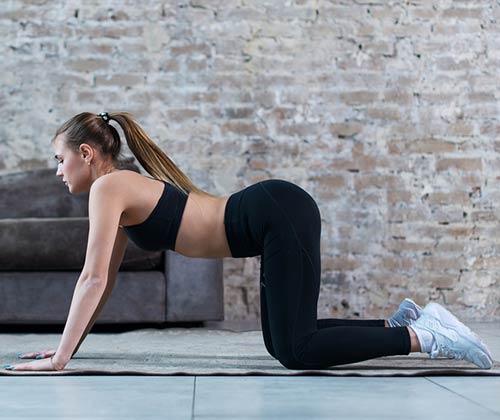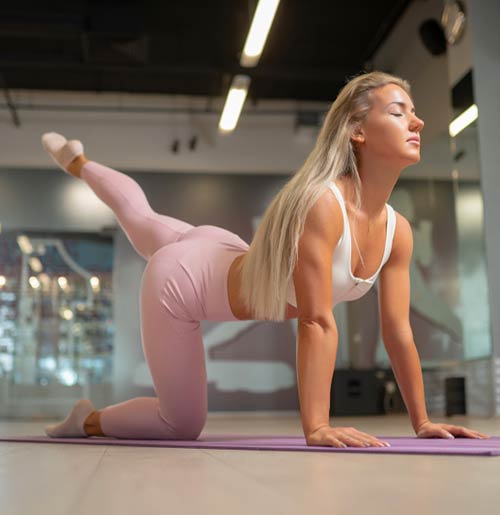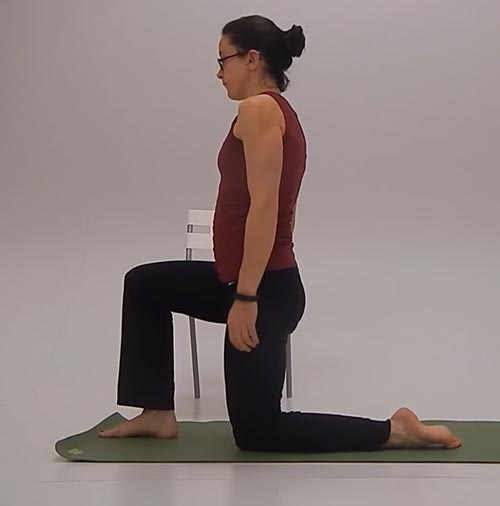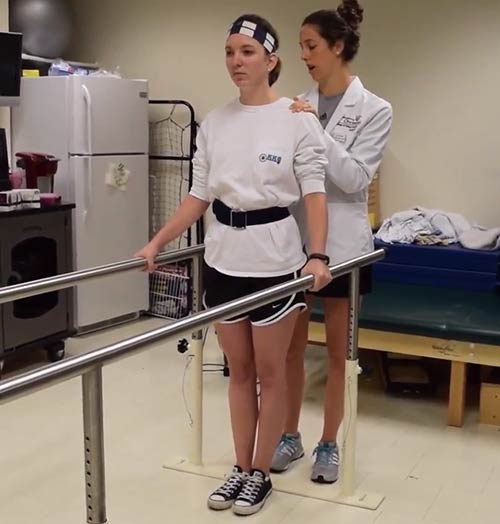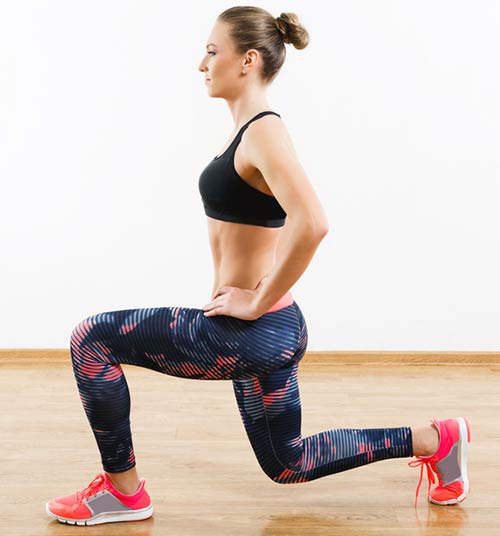Balance keeps you from falling – whether you are sitting or standing. But in case of an inner ear infection, head injury, or recent surgery, your body’s balance might take a hit. Simple tasks like turning over and walking short distances seem impossible without you tripping over and falling. This is where balance exercises are really helpful.
You can regain stability and strength by doing simple balance training exercises with the help of your physical therapist for at least 20 minutes a day. Start from the neck and move on to the torso and lower extremities. Your healing process can last from a few weeks to several months depending on your injury or infection. You will end up feeling more confident about moving around and happy to see your progress. Listed below are 15 best exercises for improving balance.
Best Balance Exercises You Can Try At Home
Before starting, you should know that balance exercises should always be done in progression. Do not get too ambitious and think you can do it all without help. That’s not going to happen, especially if you are recovering from an injury.
Let’s start with the two kinds of balance exercises – static and dynamic. Once you are confident about doing exercises of both categories with ease, you can start doing strength and conditioning exercises to recover completely. Without further ado, let’s begin!
Exercises To Increase Static Balance
1. Supine On Mat Or Bed
How To Do
- Lie down on a mat or your bed. Flex your knees and draw them close to your chest by wrapping your hands around your legs.
- Roll over to your right, hold for two seconds, and then roll back to the starting position.
- Roll over to your left, hold for two seconds, and then roll back to the starting position.
Note: You might need assistance from your physical therapist initially if you are recovering from an injury.
Sets And Reps – 2 sets of 5 reps
2. 4-Point Stance On Mat Or Bed
How To Do
- Lie down on a mat or your bed.
- Roll over to your right and get into a prone position.
- Clench your fists, flex your elbows and knees, and use your arm strength to lift your upper body and then your torso.
- Get on all fours and hold this pose for 10 seconds.
- Lower your torso slowly and get into a resting pose.
- Repeat one more time if you are comfortable.
Note: You might need assistance initially from your physical therapist while you hold the pose for 10 seconds.
Sets And Reps – 2-3 sets of 10 seconds hold
3. 3-Point Stance On Mat Or Bed
How To Do
- Get on all fours.
- Lift off your left leg off the mat and extend it backward.
- Hold this pose for 5-10 seconds.
Sets And Reps – 3 sets of 3 reps
4. 2-Point Stance On Mat Or Bed
How To Do
- Get on all fours.
- Slowly lift your left hand off the mat and extend it forward.
- Lift your right knee off the mat and extend your leg behind.
- Hold this pose for 5-10 seconds.
Sets And Reps – 3 sets of 2 reps
5. Assisted Kneeling
How To Do
- Get on all fours.
- Your physical therapist will place a gym ball in front of you. Place your right hand on it.
- Once you are comfortable, place your left hand on the ball and raise your torso slowly.
- Get into a kneeling position.
- Your physical therapist will help to stabilize your shoulders and back if needed.
- Hold this pose for 20 seconds.
Sets And Reps – 2 sets of 3 reps
6. Knee Walking
Caution: Do not do this exercise if you just had knee surgery or are not allowed to put any pressure on your knees.
How To Do
- Get on all fours.
- Walk forward and backward. You might need assistance from your physical therapist in the beginning.
- Walk sideways as well.
- Increase the distance gradually as you progress.
Sets And Reps – 2 sets of 2 reps
7. Kneeling To Standing
How To Do
- Get on all fours in front of a stall bar or beside a chair. Make sure that the chair is stable and strong enough to take your weight. Your physical therapist will stand behind you.
- Hold one of the lower bars, one hand after another, place your right foot in front of you, and keep the right knee flexed. Or place one palm on the chair and get into a sitting lunge position.
- Use your body’s strength and assistance from your physical therapist to get into a standing position slowly.
- Get into the kneeling position with the help of your physical therapist again and repeat.
Sets And Reps – 2 sets of 2 reps
8. Standing Between Parallel Bars
How To Do
- Stand holding two parallel bars.
- Place one foot forward, keep your shoulders relaxed, and sway from side to side.
- Do this 10 times and then sway backward and forward.
- Do this 10 times.
Sets And Reps – 3 sets of 3 reps
You must do these exercises for about 3-4 weeks. Consult with your doctor and physiotherapist before advancing to the next stage – dynamic balance exercises.
Exercises To Increase Dynamic Balance
9. Stepping Over Small Objects
How To Do
- Your physical therapist will place small objects on the floor.
- Start walking and try stepping over those objects. You can take assistance from your physical therapist.
Sets And Reps – 3 sets of 1 rep
10. Walking In A Straight Line
How To Do
- Your physical therapist will stick arrows to direct your walking path.
- Step on those arrows and walk in a straight line after putting your hands across your chest.
Sets And Reps – 3 sets of 2 reps
11. Ascend And Descend The Staircase
How To Do
- Hold the side railing of a short staircase.
- Place your good leg up first and then place your bad leg on the first step.
- Climb up the stairs, turn around and climb down with your bad leg first and then the good leg.
Sets And Reps – 2 sets of 3 rep
12. Small Vertical Jumps
How To Do
- Hold the back of a stable chair or a stall bar.
- Hop and jump vertically.
- Land softly on the balls of your feet first and then the heels.
Sets And Reps – 3 sets of 10 reps
Do these exercises for another two weeks. Talk to your doctor and/physiotherapist before moving on to the next stage, where you will rebuild your strength. Here are a few exercises that you can start with.
Other Exercises To Do As You Progress
13. Lunges
How To Do
- Stand straight. Keep your hands on your waist, chest out, shoulders relaxed, core engaged, and look straight ahead. This is the starting position.
- Place your right foot in front of you.
- Flex both your knees, keep your torso straight, and lower your body. Your thighs should be perpendicular to your shin bone.
- Hold this pose for a moment and get back up to the starting position.
- Now, place your left foot in front of you and repeat.
Tip: You can do weighted lunges by holding a 5-pound dumbbell in each hand.
Sets And Reps – 3 sets of 10 reps
14. Calf Raises
How To Do
- Stand behind a chair and hold the backrest.
- Lift both the heels off the floor and bring them back down.
Sets And Reps – 3 sets of 10 reps
15. Sumo Squat
How To Do
- Stand straight with your feet a little more than shoulder-width apart.
- Keep your shoulders relaxed, chin up, and core engaged.
- Push your buttocks out, flex your knees, and sit down until your thighs are parallel to the floor. Make sure your knees don’t overshoot your toes.
- Hold this pose for 3 seconds and then rise back to the starting position.
Sets And Reps – 3 sets of 10 reps
There you go – 15 balance exercises that you can do to improve your strength and stability. Do these exercises regularly, and you will recover much faster. Moving your body will also help boost your confidence and make you feel good about the recovery process. So, no more thinking! Get on the “stay active” bandwagon and get the quality of life that you deserve. Take care!

